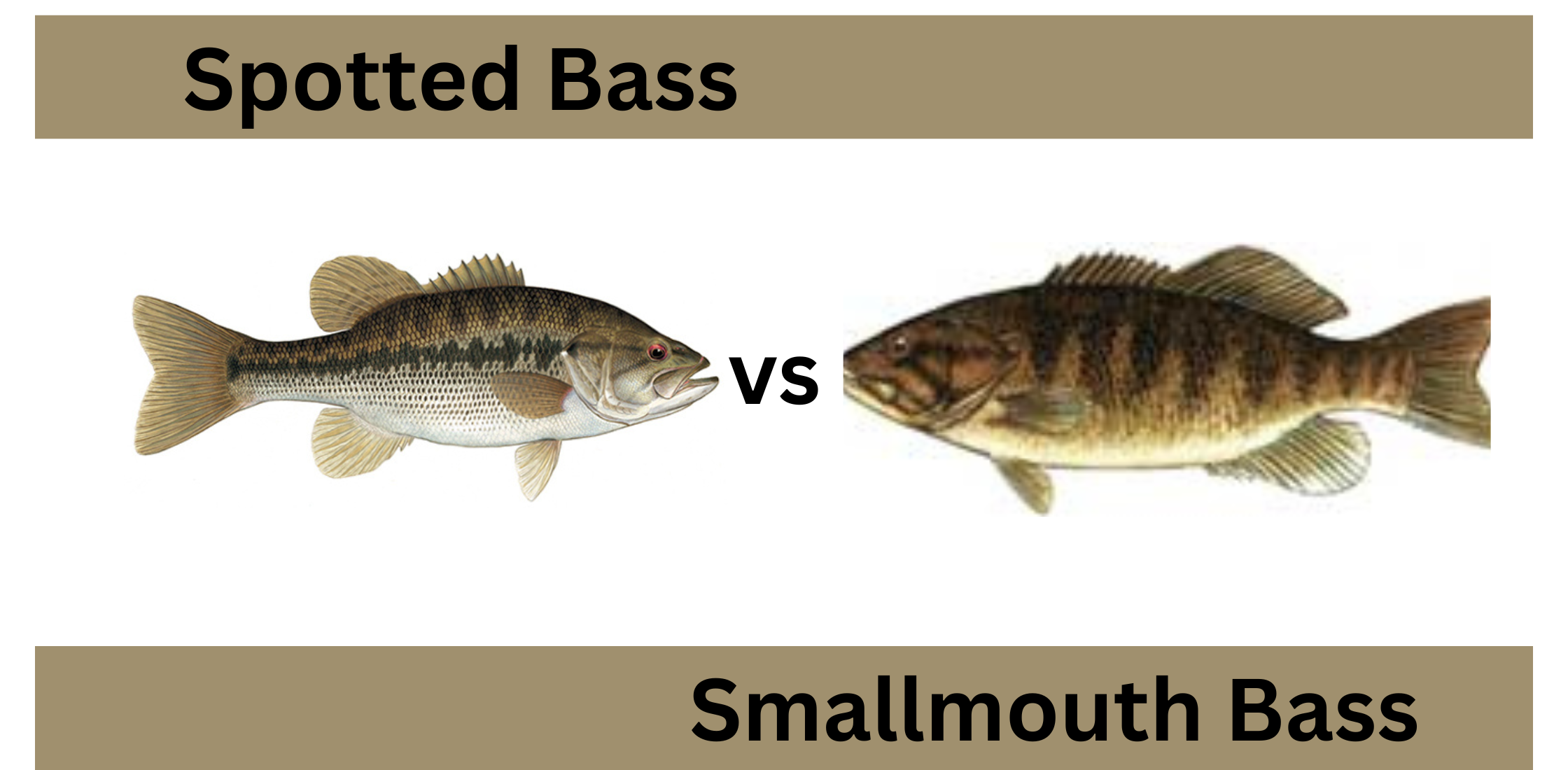Spotted bass and smallmouth bass are two different species of black bass that share many similarities but also have some notable differences.
Commonalities
Before we delve into the specifics of each species, let’s understand what these two have in common. Both hail from the black bass family. They’re known for their distinctive coloring, often decorated with darker lines along their sides, but the pattern is distinctly different, They both sport spine fins and sharp serrated teeth, which if touched, anglers won’t soon forget!
And it’s not just about looks. The spotted and smallmouth bass are powerhouses, demonstrating strength and agility, even within their compact bodies. Whether you’re an angler or just a fishing enthusiast, the experience of catching these fish is sure to get your adrenaline pumping.
Here are a few key distinctions:
- Appearance:
- Spotted Bass (Micropterus punctulatus): As their name suggests, these bass are characterized by the presence of small, dark spots along their lower sides, forming a horizontal line. They are often green with a white belly. Their jaw does not extend beyond the back margin of the eye when the mouth is closed. A sure sign that it is a spotted bass is the tooth patch on the tongue. It’s a dark, roundish blob in the center, and it feels like sandpaper, leaving anglers with “bass thumb.”
- Smallmouth Bass (Micropterus dolomieu): These bass have a darker, brownish-green color and sport vertical dark bands along their sides rather than spots. Their jaw extends to the middle of the eye, and they have a distinctly more pointed head than the spotted bass.
- Habitat:
- Spotted Bass: They prefer warmer water and are more common in the southern United States. Spotted bass like clearer water, rocky bottoms, and areas with cover like vegetation or downed trees. Lake Lanier is one of the best Spotted Bass fisheries in the US.
- Smallmouth Bass: They are usually found in cooler, clearer water with a rocky substrate and ample cover, rocky areas along weed beds. They are widespread across the U.S. but are more common in the northern states and southern Canada.
- Behavior:
- Spotted Bass: These fish are more aggressive and are more likely to be found in or near cover. They also have a reputation for being more difficult to catch than other bass species.
- Smallmouth Bass: Smallmouth bass often show a preference for certain types of bait and can be more challenging to hook due to their tenacious, acrobatic fight.
- Size:
- Spotted Bass: Spotted bass are generally smaller than smallmouth bass. The average length is around 12-17 inches, and they typically weigh 1-2 pounds, but in Lake Lanier often grow to above 5 pounds.
- Smallmouth Bass: Smallmouth bass are generally larger, with an average size of 1-3 pounds and length of 12-20 inches. They can grow up to 5-6 pounds in ideal conditions, and the record is over 11 pounds.
- Diet:
- Spotted Bass: These fish are opportunistic feeders and their diet can include insects, crustaceans, and smaller fish. Larger spotted bass will also eat larger prey, including smaller fish of other species
- Smallmouth Bass: They also have a varied diet, but it primarily includes small fish, insects, and crustaceans. Smallmouth bass are known to be especially fond of crayfish when they are available.


Recent Comments